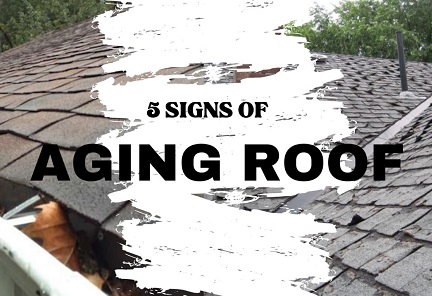Measuring the Cost of Roof Replacement in NOVA
Roof replacement is a significant investment for homeowners in Northern Virginia (NOVA). Properly estimating the cost of a roof replacement project is essential to ensure that the project stays within budget and meets the structural and aesthetic needs of the property. This comprehensive guide provides in-depth guidelines for accurately measuring the cost of roof replacement in the NOVA region. Factors such as materials, labor, local regulations, and geographical considerations play crucial roles in determining the overall cost. By following these guidelines, homeowners and professionals can make informed decisions and achieve successful roof replacement outcomes.
1. Roof Size and Pitch
The size and pitch of the roof are fundamental factors in estimating the cost of a roof replacement project. Larger roofs require more materials and labor, resulting in higher costs. The pitch of the roof also affects the complexity of the installation process, as steeper slopes may require additional safety measures and skilled labor. Precise measurements of the roof’s dimensions and pitch are essential to accurately assess the materials needed and the labor required.
2. Material Selection
Choosing the right roofing material is a critical decision that significantly impacts the cost of the project. Various roofing materials are available, each with its own price range and characteristics. Common options include asphalt shingles, metal, wood shakes, slate, and tile. Homeowners should consider factors such as durability, aesthetics, and climate compatibility when selecting a roofing material. The cost of materials and their installation requirements should be thoroughly researched to ensure an accurate cost estimate.
3. Labor Costs
Labor costs constitute a substantial portion of the overall roof replacement budget. In the NOVA region, skilled labor may be relatively expensive due to the high cost of living and competitive market. It is essential to obtain quotes from reputable roofing contractors and factor in the experience and expertise of the roofing crew. Experienced professionals may command higher wages, but their workmanship can significantly impact the longevity and performance of the new roof.
4. Tear-Off and Disposal
For projects that involve replacing an existing roof, the cost of tear-off and disposal must be considered. Removing old roofing materials and disposing of them properly can incur labor costs and waste disposal fees. Additionally, any equipment required for the tear-off process should be factored into the cost estimate.
5. Underlayment and Deck Repair
The condition of the roof deck is crucial for the success of the new roof installation. If the deck requires repairs or replacement, these costs should be included in the estimate. Proper underlayment is essential for moisture protection and can affect the overall cost. Ensuring that the roof deck is structurally sound and prepared for the new roofing material is vital for a long-lasting and secure roof.
6. Flashing and Ventilation
Proper flashing around chimneys, vents, skylights, and other roof protrusions is essential to prevent leaks and water damage. Adequate ventilation is also crucial for maintaining the health of the roof and the overall property. The cost of flashing materials, installation, and ventilation systems should be factored into the estimation process.
7. Permits and Inspections
Before commencing a roof replacement project in NOVA, homeowners should check local regulations to determine if permits are required. Permit fees and the cost of inspections should be accounted for in the budget. Adhering to local building codes and obtaining the necessary permits is essential to avoid potential legal and financial complications.
8. Geographical Factors
The geographical location of NOVA introduces specific considerations into the cost estimation process. The region experiences a range of weather conditions, including heavy rain, snow, and occasional storms. These factors may influence the choice of roofing materials and impact the overall cost. Choosing materials that are durable and suited to the local climate can contribute to the long-term success of the roof replacement project.
9. Contractor Reputation
Selecting a reputable and experienced roofing contractor is paramount to the success of a roof replacement project. While it may be tempting to opt for the lowest bid, quality workmanship, and proper installation are essential for the roof’s longevity and performance. Homeowners should research and interview multiple contractors, request references, and evaluate previous projects to make an informed decision.
10. Contingency Budget
Unforeseen issues or additional work may arise during the course of a roof replacement project. To mitigate potential financial strain, it is advisable to allocate a contingency budget. This additional fund can be used to address unexpected challenges or changes that may emerge, ensuring that the project stays on track and within budget.
Estimating the cost of a roof replacement project in Northern Virginia (NOVA) requires a comprehensive understanding of various factors. By meticulously considering roof size, materials, labor, tear-off, underlayment, flashing, permits, and other elements, homeowners and professionals can develop an accurate cost measurement. The unique geographical considerations of NOVA, coupled with the importance of contractor reputation and contingency planning, contribute to the overall success of the project. Following these guidelines empowers stakeholders to make informed decisions, achieve cost-effective outcomes, and ensure the durability and quality of the newly replaced roof.
5 Signs of Aging Roof by PowerRoofr
Your home looks beautiful if its roof is in good condition. It is an important part of the house structure as it protects the interior from changing weather conditions and keeps the home insulated. On the other hand, an aging roof creates issues like leaks, mold or algae growth and energy loss, etc. Therefore, for homeowners, it’s important to have a periodic inspection of the roof. Not doing it regularly will lead to bigger problems and a bigger cost.
It is critical to keep track of when your roof shows signs of aging. Waiting too long to fix a roof that should have been replaced a long time ago can result in expensive problems. Every six months, check for indicators of aging to spot any problems before they become costly and keep your home safe.
Below are 5 signs that need to be considered.
1. Granules are Found in the Gutter
Shingles are covered with granules for more durability. If you found considerable debris in your gutters, then you should understand that your roof is getting old. Either it needs replacement or repair. If you have a new roof and noticed granules in the gutter, there’s nothing to worry about. Because that’s the loose part of the granules. However, if your roof is 10-15 years old and you have found a cluster of granules, that’s worrisome. Ultimately the life of the shingles deteriorates quickly once it gets exposed to sunlight because of falling granules.
2. Moss or Algae Growth on the Roof
Roof exposure to rain, snow, and water is unavoidable. If it is not regularly checked it may accumulate some water. This water penetration leads to most of the problems and moss or algae growth on the roof surface is one of those. Moss and mold develop on a home’s roof, causing gaps between the two shingles and accelerating the breakdown of the roof shingles. If left unchecked, this can lead to water damage and the need for a complete roof replacement.
3. Weakening of Sealant Between Shingles
As we can see from the naked eye shingles are placed over one another to keep them steady and more durable. Adhesive glue or sealant is applied between the two shingles to keep them intact. This sealant gets weakened over time. Weather conditions, like heavy rains and snow, affect its sealant strength badly which leads to broken shingles. And breaking of shingles is indeed a big sign of an aging roof which needs to be considered immediately.
4. Curling / Cracking of the Shingles
Cracked shingles, curled or cupped shingles, and missing shingles all indicate one thing – Roof Is Getting Old. The roof is exposed to weather elements and fights with them 24/7. Its deterioration is normal and requires maintenance. Despite regular maintenance, the aging roof needs to be replaced.
5. Leak in the Roof Attic
A leak in the roof is a red flag and a key sign of an aged roof. We should never ignore the water marks on the interior of the house. This means that water is seeping in through a hole or a crack and can lead to a much bigger problem.
All the above-mentioned signs of the aging roof are interlinked and must not be overlooked.
We Help You Inspecting Your Roof
Obtaining a professional examination is essential if you see any signs of damage or deterioration on your roof. You can get expert advice on whether to repair or replace your roof. PowerRoofr helps you in determining possible signs of aging your roof is showing over time.
Call us and get your roof examined by our experts. Or fill out our free estimate form.






